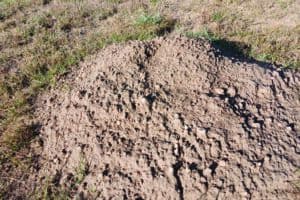Longtime local journalist Bill Radford and his wife, Margaret, live on 5 acres in the Falcon area with ducks, chickens, rabbits, dogs, cats, two noisy parrots, goats and two horses. Contact Bill at billradford3@gmail.com.
Ever since my wife, Margaret, took a beekeeping class in college (yes, more than a few years ago), she’s been interested in keeping bees. And while she hasn’t quite taken the plunge, she has become sort of an unofficial beekeeping apprentice.Her mentor is Jeremy Patterson, who lives in an apartment in Colorado Springs. That’s not exactly an environment conducive to keeping bees, so he maintains his hives at Prairie Springs Farm on the north side of the Springs, with a deal to pay “rent” in honey. Margaret found him on Craigslist while looking for someone who might want to keep their hives on our land. We’ve visited his bees a couple of times; the first time, he and Margaret were dressed in protective apparel as they examined the hives while I was not. I was remarkably unafraid as the bees swarmed around us ó a bravado that ended in me getting stung a couple of times.It has been a tough year for beekeepers. An article last month in ìThe Colorado Springs Gazetteî told of widespread beehive losses locally; last year’s dry spring and summer, which reduced the amount of forage for the bees, was listed as one reason for those losses. The bomb cyclone in March added to the beekeepers’ woes.”Losses in our general area ran 50 to 60 percent,” Mike Halby, secretary for the Pikes Peak Beekeepers Association, confirmed in an email. Nationally, honeybee populations have been declining for decades. There were 5.9 million honey-producing colonies in the U.S. in 1947, according to the U.S. Department of Agriculture; in 2017, that number was down to 2.67 million.And itís not just honeybees that are in trouble. One in four wild bee species in the U.S. is at risk of extinction, according to a fact sheet at earthday.org. And, as the fact sheet notes, “Bees are indispensable pollinators of most ecosystems. There are 369,000 flowering plant species, and 90% of them are dependent on insect pollination.îThe Pikes Peak Beekeepers Association’s mission is to provide information and support for area beekeepers, from Monument to the north and Pueblo and Canon City to the south; it has about 275 members, Halby said. “Membership ranges from new beekeepers to experienced hobbyists to some commercial beekeepers.”Patterson is a self-taught beekeeper; YouTube videos, he said, have been a valuable resource. Halby recommends taking a beekeeping class. While the PPBA already had its “Bee School” classes in March, other entities offer classes, too, he said.The Big R in Falcon is among places to buy beekeeping supplies. Another, more extensive resource is Rocky Mountain Bee Supply (https://rockymountainbeesupply.com), 24 S. Walnut St. in Colorado Springs. The typical cost to get started in beekeeping is $300 to $400, Halby said, “Depending on how much protective equipment you buy. That price includes a three-pound starter package of bees.”Margaret already has some supplies, including a smoker, which a Popular Mechanics article calls “a beekeeper’s best friend.” A smoker calms the bees; my unfortunate encounter with the bees came when we lacked a lighter to relight Patterson’s smoker; and they got a bit testy.Halby has been part of the beekeeping world for two decades. “After I retired from the Army, I had become interested in beekeeping and finally took the plunge in 1999,” he said in his email. “Working with the bees is fascinating and seeing your efforts result in a healthy colony is rewarding. The honey is also a plus.”One concern we’ve had is whether our prairie acreage would provide enough food for bees. Instead of declaring war on dandelions, we’re letting them flourish this summer. (Bees also need water; luckily, there are a few ponds close by.)”Available forage is always a major consideration when thinking about keeping bees,” Halby said. “Not all flowers produce the nectar, which the bees use to make honey. They collect pollen as well. They normally forage in a 1-to 3-mile radius from their hive. So use that distance to evaluate the available forage.”With time already flying by this year, we’re looking at getting our own bees next spring. Hopefully, it will “bee” worth the wait.(To learn more about the Pikes Peak Beekeepers Association, go to https://pikespeakbeekeepers.org.)





